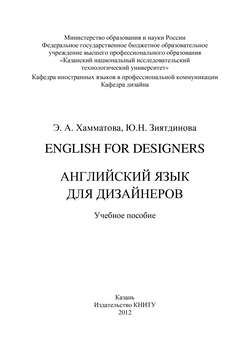Читать книгу English for designers. Английский язык для дизайнеров - Ю. Н. Зиятдинова - Страница 3
Unit 2
FASHION HISTORY
Оглавление1. Прочитайте следующие слова вслух и переведите их письменно:
cyclas, sleeves, transition, kittle, floor-length, ankle-length, abundant, doublets, hose, collars, opulence, farthingale, ornamentation, shoulders, waistlines, reveals, petticoats, foreparts, somber, stomachers, breeches, ensembles.
2. Прочитайте и переведите следующие глаголы:
to divert, to inaugurate, to enable, to include, to reflect.
3. Подберите эквивалентный перевод словосочетаний из колонки A в колонке В.
4. Прочитайте и переведите текст.
EUROPEAN STYLE
Clothing throughout the thirteenth century was very simple and varied very little between men and women. A loose-fitting fulllength gown with fitted sleeves worn with a narrow belt and a sleeveless coat called the cyclas was the norm. Until this point, very little diverted from Roman influence.
The fourteenth century inaugurated the Renaissance and brought the first major from simple draped shapes to fitted garments. Contoured seams and the start transition of tailoring techniques now enabled clothing to become more of a sheath around the body. Buttons and lacing allowed for an even closer fit. Women of the time wore an ankle- or floor-length chemise called a cotte, or kittle. The fitted version of the gown worn on top, called a cotehardie, often featured long hanging sleeves. In Europe throughout this period, fashion began to change at an unprecedented pace.
During the fifteenth century Europe experienced an abundant prosperity, the growth of the middle classes, and the development of a skilled workforce. This created an appetite for extravagances. Voluminous gowns called houppelandes featured floor-length sleeves and were worn with doublets, high collars, and hose. Headwear became more important and was trimmed with all manner of feathers and jewels. Everything became more complex and varied by region.
The sixteenth century was characterized by an increased opulence in fashion, most especially in England under Elizabeth I. Some of the atypical fashion details included the lace Tudor ruff, a hoop skirt called a farthingale, and rich surface ornamentation. In sharp contrast to the sloping narrow shoulders of the early 1500s, the Elizabethan court adopted shoulders that were high and wide with narrow sleeves reflecting French and Spanish styles. The shoulders were further enhanced by padded and jeweled shoulder rolls and accentuated by deep V-shaped waistlines. The V shape was mirrored by skirts that opened at the front to display petticoats or heavily decorated foreparts.
